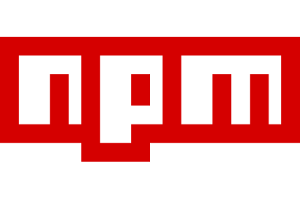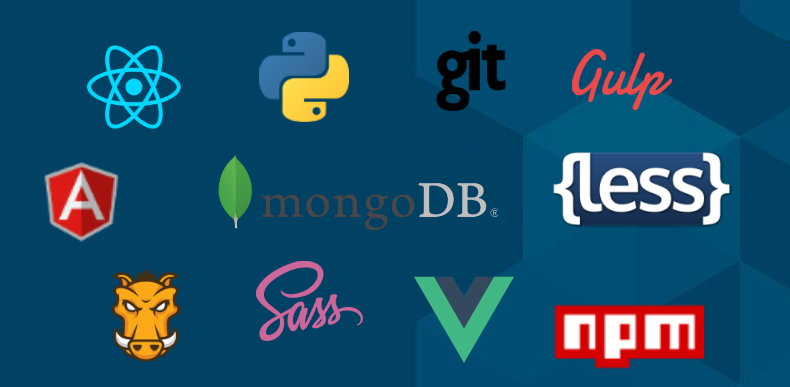In the beginning, creating a website involved simply using a text editor to construct hypertext documents, adding links to other documents, and applying CSS style commands for cosmetic purposes. Microsoft’s FrontPage and other “high-level” development tools aided in the process. As web development has progressed into the technological complexity of today, we are familiar with a great many buzz-words, but not too clear on the details of them all. The purpose of this article is to provide a brief definition of these components and an overview of how they interact within the web development process.
Most developers have there own tools of preference, and to be considered a “full-stack” developer, would be proficient with at least one front-end tool, as well as least one back-end tool. A modern full-stack development environment will contain some, or all, of the following:
Essentials
-
HTML
Hypertext Markup Language, or HTML is the most basic component of a web document. HTML5 is the most recent flavor and includes many features that provide additional functionality, such as the <audio>, <video> and <nav> tags. Functionality that developers previously provided by other methods.
Understanding the basics of HTML is imperative for anyone who creates web-pages, whether they are professional stack developers, or merely novice users.
-
CSS
Cascading style sheets, or CSS, consist of a series of commands used to format the appearance and define certain characteristics of HTML elements. A CSS command consists of a 2 basic parts, a selector and a set of rules. Each HTML tag can be referenced, usually by a class or an id associated with the element. The rules in the CSS statement define characteristics of the selected element.
Programming Languages
-
JavaScript
A high-level, interpreted programming language that conforms to the ECMAScript specification. JavaScript has curly-bracket syntax, dynamic typing, prototype-based object-orientation, and first-class functions.
Not to be confused with the programming language Java, JavaScript was inspired by and based many of its conventions on Java.
JavaScript (JS) is a lightweight, interpreted, or just-in-time compiled programming language with first-class functions. While it is most well-known as the scripting language for Web pages, many non-browser environments also use it, such as Node.js, Apache CouchDB and Adobe Acrobat. JavaScript is a prototype-based, multi-paradigm, dynamic language, supporting object-oriented, imperative, and declarative (e.g. functional programming) styles. Read more about JavaScript.
-
TypeScript
An open-source programming language developed and maintained by Microsoft. It is a strict syntactical superset of JavaScript, and adds optional static typing to the language.
TypeScript is mainly used in developing large applications. TypeScript transcompiles into JavaScript and existing JavaScript is valid TypeScript.
-
Python
An interpreted, high-level, general-purpose programming language. Created by Guido van Rossum and first released in 1991, Python’s design philosophy emphasizes code readability with its notable use of significant whitespace. Its language constructs and object-oriented approach aim to help programmers write clear, logical code for small and large-scale projects.
-
Ruby
An interpreted, high-level, general-purpose programming language. It was designed and developed in the mid-1990s by Yukihiro “Matz” Matsumoto in Japan.
Ruby is dynamically typed and garbage-collected. It supports multiple programming paradigms, including procedural, object-oriented, and functional programming. According to the creator, Ruby was influenced by Perl, Smalltalk, Eiffel, Ada, Basic, and Lisp.
Front-end Frameworks
-
Angular
AngularJS is a JavaScript-based open-source front-end web framework mainly maintained by Google and by a community of individuals and corporations to address many of the challenges encountered in developing single-page applications. It aims to simplify both the development and the testing of such applications by providing a framework for client-side model–view–controller (MVC) and model–view–viewmodel (MVVM) architectures, along with components commonly used in rich Internet applications. (This flexibility has led to the acronym MVW, which stands for “model-view-whatever” and may also encompass model–view–presenter and model–view–adapter.) In 2014, the original AngularJS team began working on the Angular web framework.
The AngularJS framework works by first reading the Hypertext Markup Language (HTML) page, which has additional custom HTML attributes embedded into it. Angular interprets those attributes as directives to bind input or output parts of the page to a model that is represented by standard JavaScript variables. The values of those JavaScript variables can be manually set within the code, or retrieved from static or dynamic JSON resources.
React
Also known as React.js or ReactJS, a JavaScript library for building user interfaces. It is maintained by Facebook and a community of individual developers and companies.
React can be used as a base in the development of single-page or mobile applications, as it is optimal for fetching rapidly changing data that needs to be recorded. However, fetching data is only the beginning of what happens on a web page, which is why complex React applications usually require the use of additional libraries for state management, routing, and interaction with an API.
Vue.js
An open-source JavaScript framework for building user interfaces and single-page applications. Vue.js features an incrementally adaptable architecture that focuses on declarative rendering and component composition. Advanced features required for complex applications such as routing, state management, and build tooling are offered via officially maintained supporting libraries and packages
Back-end Frameworks
-
Node.js
Node.js is an open-source, cross-platform JavaScript run-time environment that executes JavaScript code outside of a browser. Node.js lets developers use JavaScript to write command line tools and for server-side scripting—running scripts server-side to produce dynamic web page content before the page is sent to the user’s web browser. Consequently, Node.js represents a “JavaScript everywhere” paradigm, unifying web application development around a single programming language, rather than different languages for server- and client-side scripts.
The default package manager for Node.js is npm, the JavaScript package manager.
-
Django
A Python-based free and open-source web framework, which follows the model-template-view (MTV) architectural pattern.[4][5] It is maintained by the Django Software Foundation (DSF), an independent organization established as a 501(c)(3) non-profit.
Additional Tools
-
Git
Git, with its site GitHub, is an open-source repository.
Git is a distributed version control system for tracking changes in source code during software development. It is designed for coordinating work among programmers, but it can be used to track changes in any set of files. Its goals include speed, data integrity, and support for distributed, non-linear workflows.
-
Npm
 Node Package Manager, npm, is the software package manager for JavaScript
Node Package Manager, npm, is the software package manager for JavaScriptOriginally short for Node Package Manager, npm is a package manager for the JavaScript programming language. It is the default package manager for the JavaScript runtime environment Node.js. It consists of a command-line client, also called npm, and an online database of public and paid-for private packages, called the npm registry. The registry is accessed via the client, and the available packages can be browsed and searched via the npm website. The package manager and the registry are managed by npm, Inc.
-
Gulp
An open-source JavaScript toolkit used as a streaming build system in front-end web development. It is a task runner built on Node.js and npm, used for automation of time-consuming and repetitive tasks involved in web development like minification, concatenation, cache busting, unit testing, linting, optimization, etc.
-
Grunt
a JavaScript task runner, a tool used to automatically perform frequent tasks such as minification, compilation, unit testing, and linting. It uses a command-line interface to run custom tasks defined in a file (known as a Gruntfile). Grunt was created by Ben Alman and is written in Node.js. It is distributed via npm. As of September 2016, there were more than 5,000 plugins available in the Grunt ecosystem.
-
Sass
Sass (Syntactically awesome style sheets) is a style sheet language initially designed by Hampton Catlin and developed by Natalie Weizenbaum.[2][3] After its initial versions, Weizenbaum and Chris Eppstein have continued to extend Sass with SassScript, a simple scripting language used in Sass files.
Sass is a preprocessor scripting language that is interpreted or compiled into Cascading Style Sheets (CSS). SassScript is the scripting language itself. Sass consists of two syntaxes. The original syntax, called “the indented syntax,” uses a syntax similar to Haml.[4] It uses indentation to separate code blocks and newline characters to separate rules. The newer syntax, “SCSS” (Sassy CSS), uses block formatting like that of CSS. It uses braces to denote code blocks and semicolons to separate lines within a block. The indented syntax and SCSS files are traditionally given the extensions .sass and .scss, respectively.
-
Less
Less (Leaner Style Sheets; sometimes stylized as LESS) is a dynamic preprocessor style sheet language that can be compiled into Cascading Style Sheets (CSS) and run on the client side or server side. Less is influenced by Sass and has influenced the newer “SCSS” syntax of Sass, which adapted its CSS-like block formatting syntax. Less is open source. Its first version was written in Ruby; however, in the later versions, use of Ruby has been deprecated and replaced by JavaScript. The indented syntax of Less is a nested metalanguage, as valid CSS is valid Less code with the same semantics. Less provides the following mechanisms: variables, nesting, mixins, operators and functions; the main difference between Less and other CSS precompilers being that Less allows real-time compilation via less.js by the browser.
-
MongoDB
A cross-platform document-oriented database program. Classified as a NoSQL database program, MongoDB uses JSON-like documents with schema. MongoDB is developed by MongoDB Inc. and licensed under the Server Side Public License (SSPL).
Since MongoDB is a NoSQL type database, instead of having data in a relational type format, it stores the data in documents. This makes MongoDB very flexible and adaptable to real business world situations and requirements. MongoDB supports searching by field, range queries, and regular expression searches. Queries can be made to return specific fields within documents.
MongoDB uses the concept of sharding to scale horizontally by splitting data across multiple MongoDB instances. MongoDB can run over multiple servers, balancing the load and/or duplicating data to keep the system up and running in case of hardware failure.
Please feel free to comment on this article. Thank you for reading!



